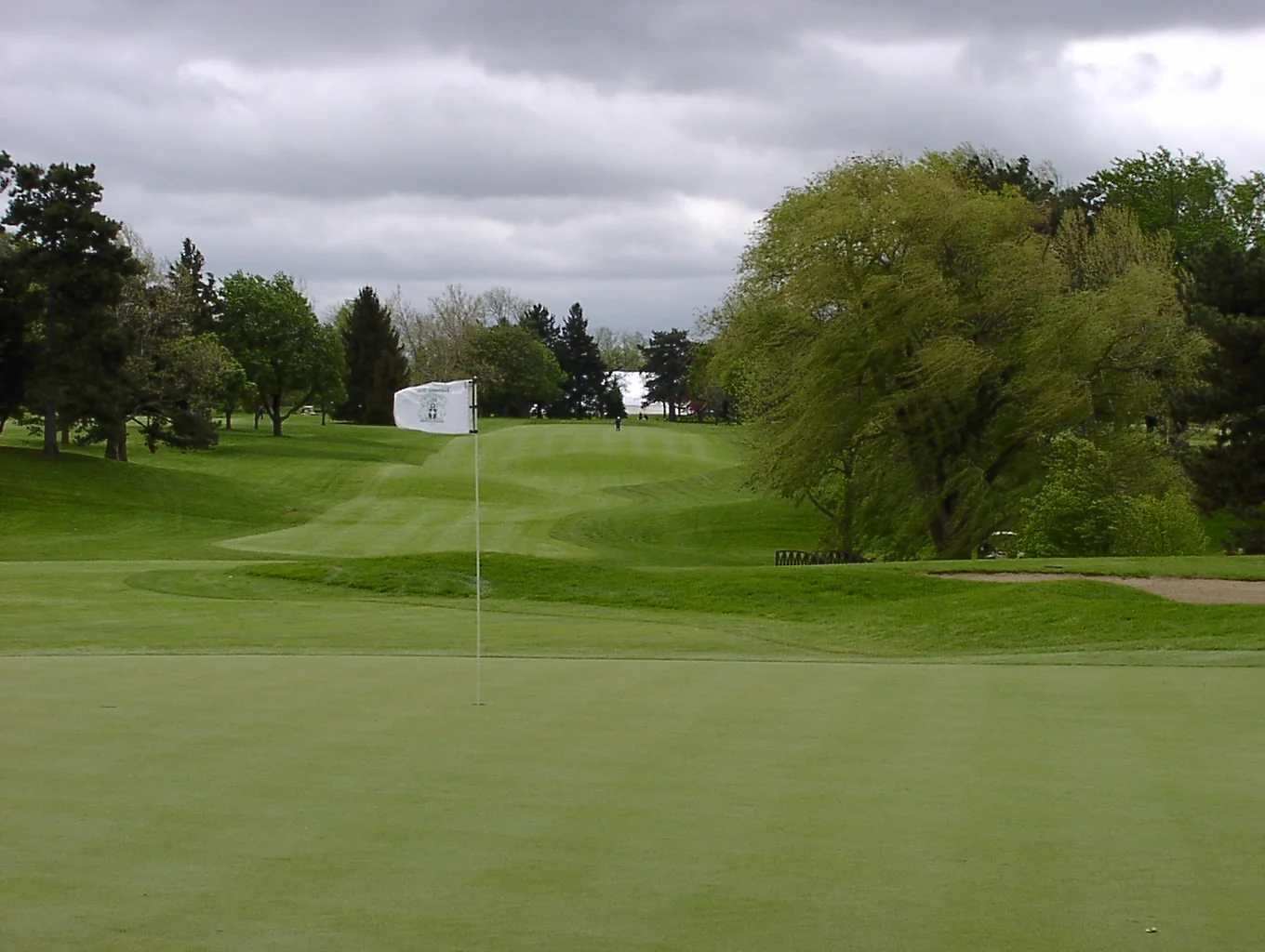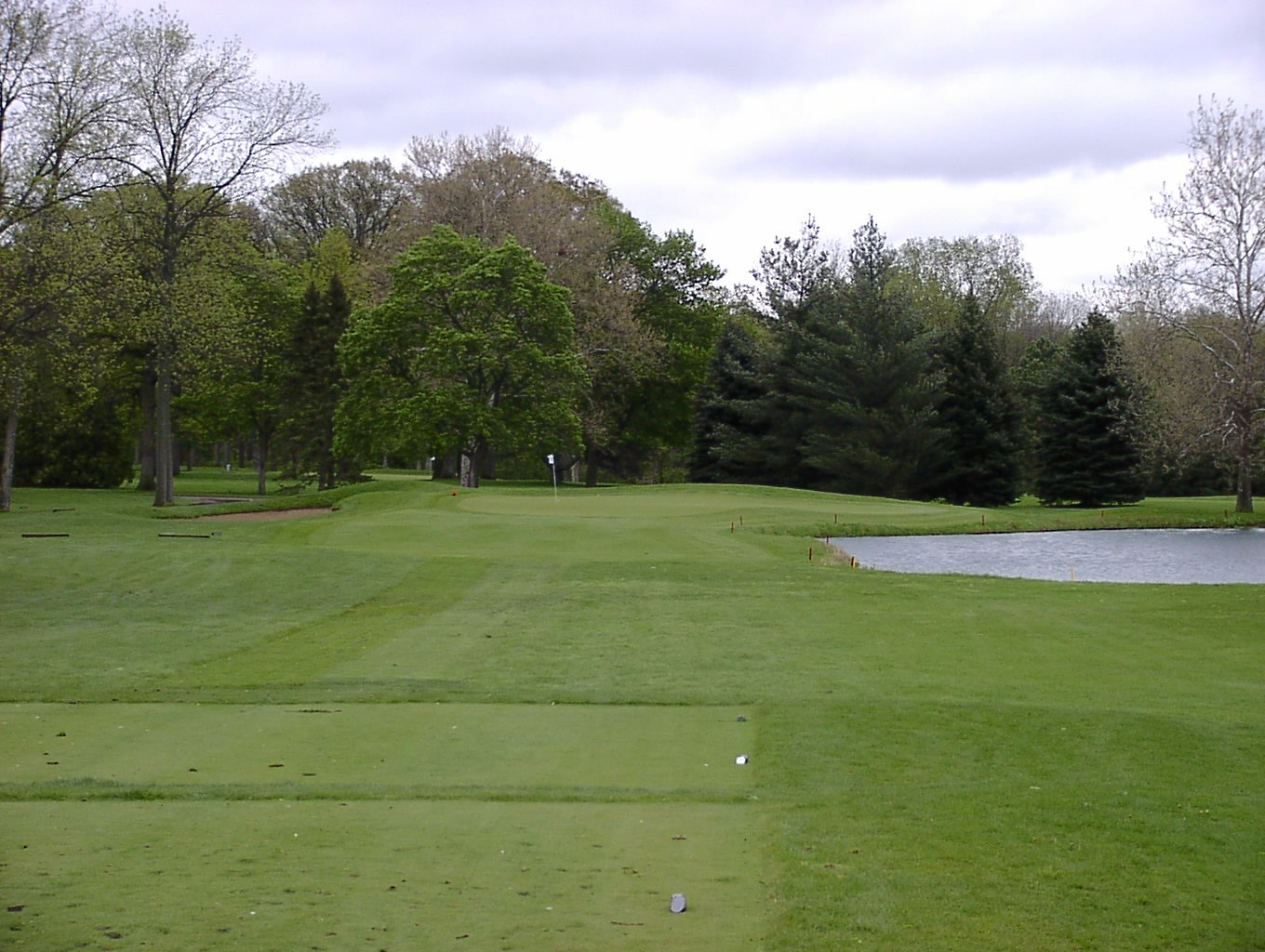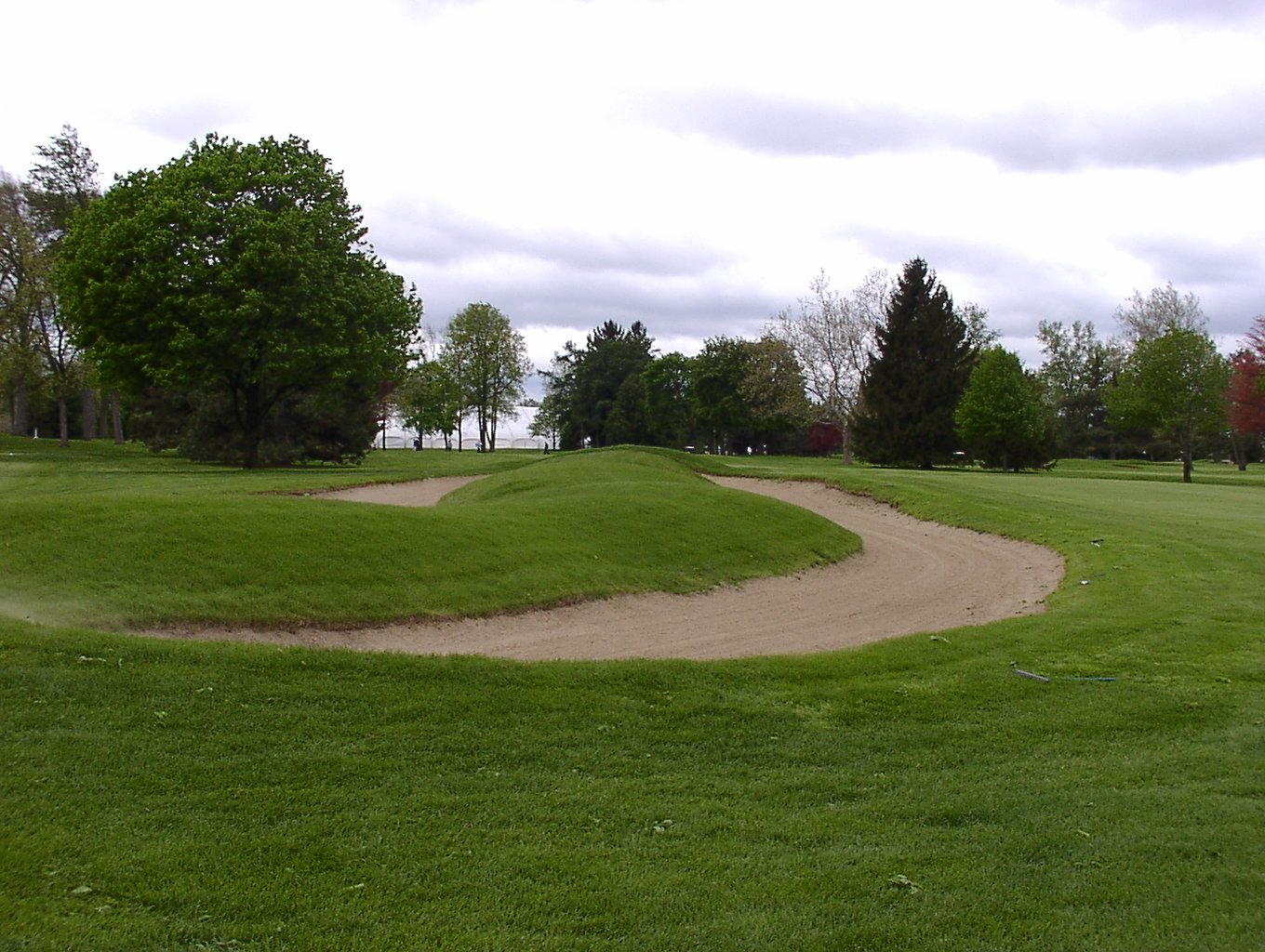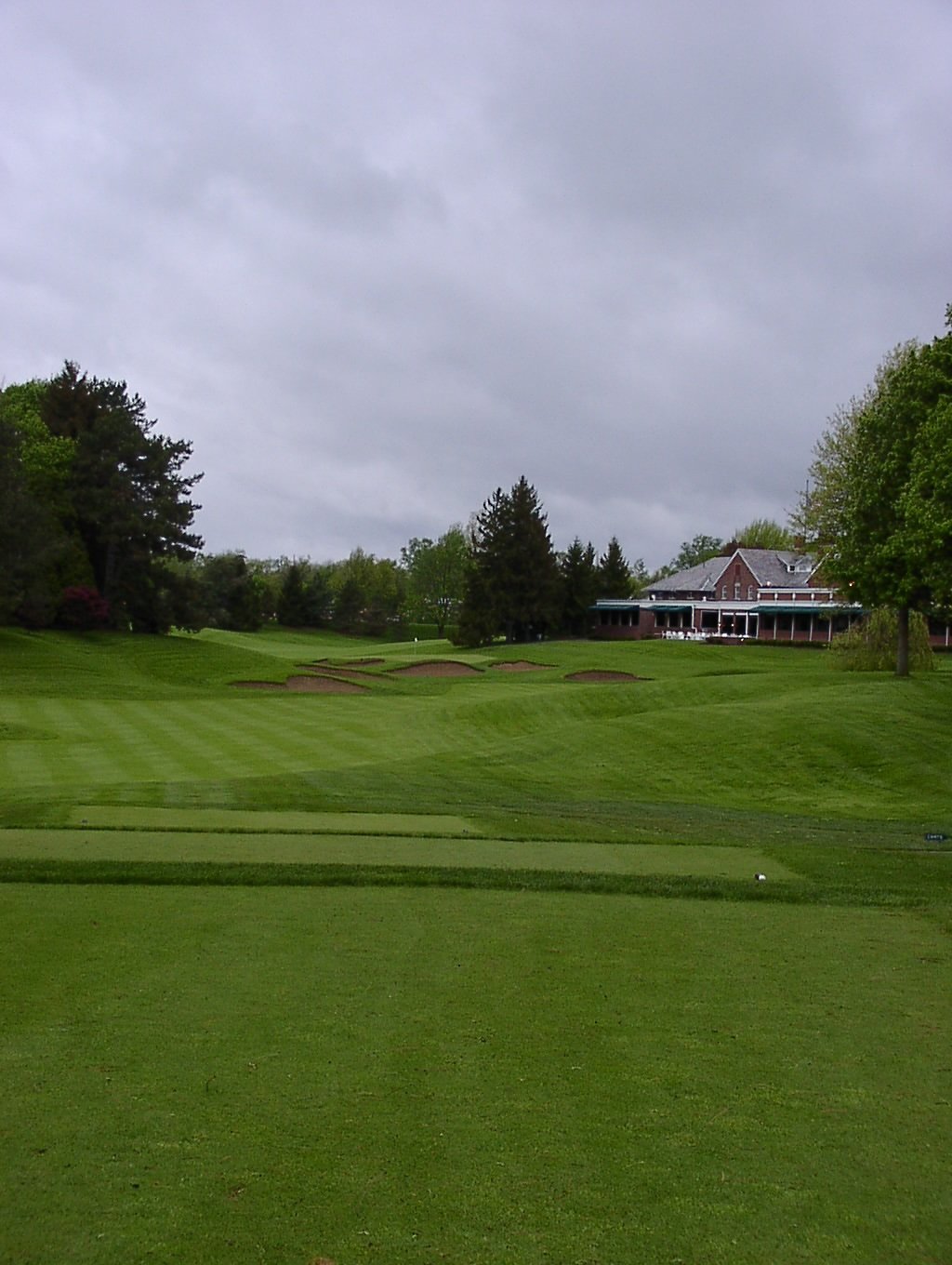INVERNESS CLUB
Architects: Donald Ross (1919), A.W. Tillinghast (1931), Dick Wilson (1957),
George and Tom Fazio (1979), Arthur Hills (1999), Andrew Green (2016, 2024).
Year Opened: 1903
Location: Toledo, Ohio
Slope: 151. Rating: 78.4
Par: 71
Yardage: 7,730
Hole-by-Hole: 1 - Par 4 399 Yds 10 - Par 4 387 Yds
2 - Par 4 487 Yds 11 - Par 4 378 Yds
3 - Par 3 274 Yds 12 - Par 3 229 Yds
4 - Par 4 516 Yds 13 - Par 5 556 Yds
5 - Par 3 172 Yds 14 - Par 4 482 Yds
6 - Par 4 534 Yds 15 - Par 4 472 Yds
7 - Par 4 481 Yds 16 - Par 4 451 Yds
8 - Par 5 607 Yds 17 - Par 4 483 Yds
9 - Par 4 464 Yds 18 - Par 4 358 Yds
Par 35 3,934 Yds Par 36 3,796 Yds
Key Events Held: U.S. Open (1920, 1931, 1957, 1979),
U.S. Senior Open (2003, 2011), U.S. Women’s Open (2027),
U.S. Amateur (1973, 2029), U.S. Junior Amateur (2019),
PGA Championship (1986, 1993),
NCAA Division I Men's Championship (1944, 2009), Solheim Cup (2021),
Inverness Four-Ball Invitational (1935-38, 40-42, 46-53).
Awards Won: Ranked in the top-25 of America's 100 Greatest Golf Courses by
Golf Digest (since the rankings began). 17th in 2003-04.
Ranked 51st Best Course in the World by Golf Magazine.
HISTORY: When one talks about golf lore, Inverness Club and its championships have to be brought up. Here's a course that has hosted four U.S. Opens and two PGA Championships among other major events. Not to mention that Byron Nelson was the club professional from 1940-45.
The USGA has made eight stops with two one the way to Inverness Club, including the 1920 U.S. Open won by Ted Ray, which was the first Open for Bobby Jones and Gene Sarazen. It also marked the final U.S. Open for Harry Vardon. During that Open, the professionals competing in the event were allowed access into the clubhouse for the first time in golf history.
Remembering that gesture, players of the 1931 U.S. Open took up a collection and presented the Club with a huge cathedral chime clock on the final day of the event. The clock is still part
of the Inverness history. The 1931 Open was the first broadcast nationally on radio.
The 1957 championship, captured by Dick Mayer in a playoff, was where Jack Nicklaus made his debut. Mayer defeated Cary Middlecoff by seven shots in the extra round.
The 79th U.S. Open was dubbed "The Best Open Ever" by the USGA, as Hale Irwin hung on despite bogeys on the final two holes for his second of three U.S. Open titles.
Talk about a dramatic finish, how about the 1986 PGA Championship that saw Bob Tway holing
out from the front bunker on the final hole to defeat Greg Norman or the 1993 PGA where Paul Azinger defeated Norman on the second playoff hole after the "Shark" lipped out for birdie on the first extra hole.
The 2003 U.S. Senior Open made its inaugural visit to Inverness, as Bruce Lietzke edged Tom Watson by two shots. Nicklaus made this his last Inverness appearance at this event. Just eight years later, the Senior Open returned, as Olin Browne finished three shots ahead of Mark O’Meara.
Heavily favored to win the 2021 Solheim Cup, the Americans lost to an upstart European team, 15-13. For the second straight time, Catriona Matthew captained her team to victory, led by Leona Maguire’s 4-0-1 mark.
The Club was originally founded in 1903 with nine holes designed by Bernard Nichols on 78 acres of land purchased for $12,000. The site was selected due to its rich, sandy soil, well-drained by a brook (Inverness Byrne) and its perfect location along a streetcar line. Sixteen years later, famed architect Donald Ross was brought in to transform the nine-hole layout into 18 championship-quality holes.
Over the years, some of the finest architect's have come in to tweak and lengthen the course, such as A.W. Tillinghast, Tom Fazio and club member, Arthur Hills. The course has been lengthened from 6,229 yards in 1930 to its present yardage of 7,730. Andrew Green was brought in to add length to the course, modify the bunkers, expand the green complexes and basically restore the course to Ross’ original intent. The clubhouse was twice destroyed by fire in 1911 and in 1918 and
has since received extensive renovations, including a major overhaul in 1999.
REVIEW: The course opens with a relatively simple par-four of just 399 yards, with a series of bunkers guarding the entire left side of the landing area. A three-metal is all that is needed off the tee, as the fairway runs out to only 285 yards. A severe, steep downslope, covered by rough awaits the big hitter who tries to chew off too much. The green, just 21 yards in depth is framed by a pair of bunkers and is well sloped.
The second hole has been stretched to 487 yards and features three bunkers guarding the landing area at the 290-320 yard mark. The green is just five yards larger than number one, but it is very undulating with sand left and right. Don't be disappointed with back-to-back pars, that's a good score.
The par-three third presents many challenges for the player, since the putting surface features three distinct levels, which allow for many hole positions. The putting surface is elevated and any shot missing long will make for a difficult up and down.
A classic four-par the fourth, is a 516-yarder that bends slightly to the left and possesses three bunkers along the right side of the fairway and trees left. A ball landing in the rough will have a tough time reaching this elevated green and will flirt with the brook trying to find a layup area. Three bunkers guard the green, as the surface is very slick.
Just when you thought you could take a break, the shortest par-three on the course awaits at number five. The green is slightly elevated and is protected right by a pair of bunkers with one left of the 26-yard deep surface. With a multitude of pin placements, you’ll need to be spot on with your approach. Take bogey (par if your lucky) and move on.
The brook winds its way to the sixth hole, as it cuts across the fairway of this demanding slight dogleg left. Accuracy is needed off the tee, as the fairway narrows at the landing area due to a trio of traps. Missing left is no bargain, as trees will block our attempt to reach the green. At 29 yards, the green is one of the largest on the course, but don't be deceived, as the surface features a hogback which slopes towards the false front. Not what you bargained for at 534 yards and a par four.
There is no question that the seventh is the "signature hole" at Inverness. This hole features beauty and brawn, as the player admires from the elevated tee box. Once again the creek crosses where the fairway begins and then winds its way along the right side of the fairway. From the tips, a 300-yard blast from the championship tees is required just to carry the creek on the right side, as the fairway bends to the right. A series of 20 or so mounds protect the left side, as players who miss the fairway will have to negotiate to layup. A long iron or fairway metal will be needed just to reach the elevated surface, which slopes from back to front. This hole is a perfect example that sand is not needed all the time, as no bunkers adorn the hole.
One of the most famous holes in golf, the par-five eighth is next and not because of its beauty or length. During the 1979 U.S. Open, Lon Hinkle took a shortcut from the tee, as he played down the adjacent 17th fairway in an attempt to reach the green in two. When Hinkle arrived the
following day, he found that the USGA had planted trees to the left of the tee box, thus forcing the players to place their tee shots towards the correct fairway. The dogleg left is the longest on the course and requires pinpoint accuracy, as bunkers guard the corner off the tee with the creek crossing 185 yards from the green. The putting surface is elevated and protected nicely by a quartet of difficult bunkers, as this two-tiered green is no pushover for birdie.
The ninth hole returns to the clubhouse, but provides no rest for the weary at 464 yards from the championship box. This hole was originally built as a par-five, but has been transformed into a rugged two-shotter with a devilishly small (24-yards) green with three large guarding bunkers. The fairway features four bunkers that pinch the landing area, just to make matters worse.
The 10th hole shares the same bunker complex off the tee as the first, with no less than five traps protecting the right side of the fairway. The two holes are similar, however the 10th green sits down at the bottom of the hill with the front of the green protected by the Inverness Byrne. Another tiny green of just 24 yards is guarded by mounds and thick rough.
Similar to the second, the 11th is a straightaway par four just 378 yards in length with a very deep green. All that is needed is a three-metal from the tee and a short iron to this narrow, but long surface. One of the easiest greens, a birdie should be the order of the day. A couple of words of caution. The fairway is quite tight at the landing zone and the green has bunkers on either side.
The only par three on the back nine, the 12th is classic Donald Ross, featuring four bunkers
shaped in a horseshoe around the green. The depth of the surface is 27 yards, but has a myriad of humps and bumps, making putting a difficult chore. This gem has been stretched to 229 yards!
It always seems that the 13th hole on most courses features a risk-reward type of play. This par-five can be reached in two by the long hitter, however don't stray because trouble lurks close by. The player must negotiate a narrow landing area 250 yards out, that slopes to the right towards a long bunker. The second shot then must be placed over the creek, either to a landing area just 100 yards out or towards the green and carrying to a second plateau, elevated and just 65 yards away. The surface is minuscule at 23 yards with a large sand bunker left and three right, as the green slopes from back to front. Birdies should come in bunches.
The course closes with five straight par-fours, all in varying length beginning with the monster, 482-yard 14th. The hole bends slightly to the right with a large landing area, however don't be deceived as trees guard the right side and a huge U-shaped bunker, some 50 yards in length flanks the left. Another small green with sand left and right awaits a long iron, which many consider to be the toughest at Inverness.
Another tester, the 15th shares that same bunker along its left side with trees and sand on the right. Missing the fairway will require an excellent layup, as once again the brook of Inverness
awaits, just 100 yards from the green. The second smallest putting surface features three bunkers surrounding the undulating green, which rarely allows for a birdie.
Another straight-forward hole, the 16th features an S-shaped fairway as it winds to the green. Sand flanks both sides of the fairway and after a successful tee shot, a medium to long iron is left. Don't be deceived by the bunker short right of the green, take an extra club as the hole is visually deceptive. The front to back sloping green makes for interesting pin placements.
The 17th requires length and more length. At 483 yards and doglegging to the left, a bomb down the left side cutting the corner will be needed to have any chance of reaching the green. As usual, sand protects the inside of the dogleg. The green complex provides a natural gallery seating, as the surface sits down in a bowl, protected by sand left and right. The green slopes drastically to the front and if your not careful, your first putt just might slide off the surface.
One of the shorter finishing holes in championship play, the 18th is just 358 yards, but is one of the finest closers in golf. The hole requires accuracy, an iron off the tee, to a fairly wide landing area. This will leave the player with a short wedge to an elevated and sloping green. With the clubhouse overlooking, the putting surface is diabolical with many slopes that fall away to the right and back. Miss right and your in "Death Valley" and bail left and your gobbled up by deep bunkers which sit well below the green.
FINAL THOUGHTS: As you drive through Toledo on your way to the course, you start wondering...where is it. Not in a ritzy, glamorous area, Inverness Club is located right off the road, with no long driveway flanked by trees or gorgeous landscaping. When you pull in, your surprised that the pool is in the front of the clubhouse and that the driving range features a huge net to the right guarding apartment buildings.
However, that is where the averageness ends. The course features beautifully contoured, tiny greens with no putting surface over 30 yards in depth. The holes are sculptured up and down and around sand and trees with no less than nine holes affected by the Inverness Byrne.
The chances of playing this course are slim and none, as play is restricted to participating with a member. But, if the opportunity arises, treat yourself, as this is a gem. If there are drawbacks, then it's the similarity of some of the holes and the practice facility.
The clubhouse is so memorable with its amazing history of Opens and PGAs, that you'll spend hours inside admiring the decor. The last five champions of events at Inverness reads like a who's who with Craig Stadler, Hale Irwin, Bob Tway, Paul Azinger and Bruce Lietzke.
The inscription on the clock reads: "God measures men by that they are. Not what they in wealth possess. This vibrant message chimes afar. The voice of Inverness."
This course represents the finest in American golf, designed by one of the most revered architects with beautifully sculptured and undulating greens and immaculate conditioning. A must if given the chance.












